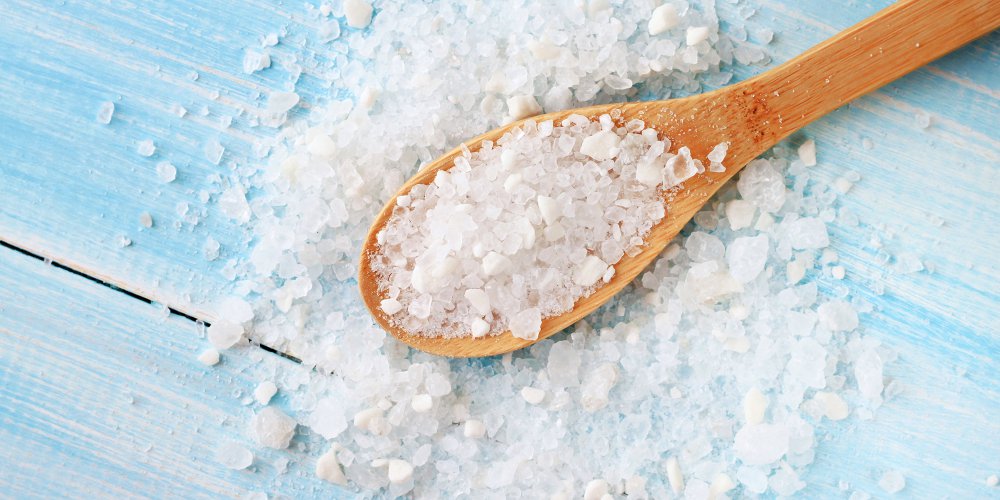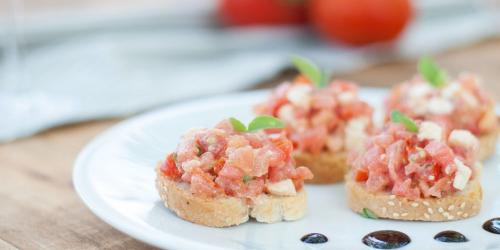Sodium (chemical symbol: Na) is a mineral present in the blood and the interstitial fluid where the cells of the body bathe. On a daily basis, it is consumed in the form of sodium chloride (NaCl), the scientific name for "table salt" .
Sodium fulfills many important functions: it participates in the transmission of nerve impulses, which is essential for the contraction of muscles. It also helps maintain the water balance (balance between the amount of water consumed and eliminated) and regulate blood pH. But do not overdo it.
Sodium: a necessary nutrient ... in small quantities
Indeed, beyond 2 grams of sodium per day (about 5 g of table salt), its consumption already increases the risk of high blood pressure, stroke and heart disease, especially if, in the At the same time, potassium intake is less than 3.5 g per day (ie if potassium intake is insufficient to compensate for excess sodium, which is often the case in our diet).
For this reason, WHO (World Health Organization) recommends consuming less than 5 g of salt per day in adults. The goal for 2025 is to reduce global salt consumption by 30% .
Diet without salt or sodium diet: what is it?
The strict salt-free diet should be distinguished from the low salt diet (low sodium diet). The strict salt-free diet targets the "0 sodium chloride" goal. It therefore totally forbids its use, both during the preparation of dishes (do not even salt rice cooking water for example) at table. It also excludes many foods that are more or less high in sodium. On the other hand, it is possible to replace sodium chloride with potassium chloride (KCl), also called potassium salt or diet salt .
However, the effectiveness of the strict salt-free diet could not be demonstrated for various pathologies. So that today, it is practically no longer used, except punctually in very special cases (usually after a cardiac procedure). Nowadays, it is mainly diets low sodium, allowing a daily dose of more or less salt, which are prescribed.
In which case to adopt a low sodium diet?
Low-salt diets are prescribed for specific pathologies.
The strict sodium diet , which allows 0.7 to 0.9 g of salt per day (300 to 350 mg of sodium), is used in cases of edema, renal failure, heart failure and liver failure . Do not salt food at the table or during preparation. A large number of foods must also be avoided (even egg whites and vegetables containing more than 40 g of sodium, such as artichokes, are prohibited). Other products rich in salt are also prohibited (eg most toothpastes, effervescent drugs).
The standard low sodium diet allows about 1.5 g of salt per day (600 mg of sodium). Do not salt food during preparation or at the table. The list of authorized foods is a little wider than for the strict sodium diet, but a lot of vigilance is still required during the development of the menus (eg vegetables containing more than 65 mg of sodium, such as celery, are prohibited). It is used in pregnant women with pre-eclampsia and during high blood pressure .
As for the expanded low-salt diet , it allows a quantity of salt of 2.4 to 4.8 g per day (approximately 1 to 2 g of sodium): it is possible to slightly salt dishes during their preparation (eg water cooking) but avoid resaling at the table. We must also limit the foods richest in salt. It is often proposed in case of long-term corticosteroid therapy .
Low salt diet: what effects on health?
In fact, when prescribing a low-salt diet, the doctor's main aim is to reduce the amount of water stored by the body (salt "holds" water) to reduce blood pressure (less water = a volume lower blood pressure = less pressure in the arteries) and resorb edema, these tissues swollen because of excess water.
The heart, liver and kidneys also have less effort to provide with a lower blood volume.
Which foods are richest in salt?
If you have to follow a diet low in salt or if you simply want to reduce your contributions to preserve your health, beware of dishes and other industrial preparations : canned foods, frozen products, commercial sauces, biscuits, chips, mustard, gherkins ...
Even foods that are a priori "sweet" may contain a significant amount of salt (eg pastries, fruits in syrup, cakes). Also avoid salted butter, whole milk, very salty cheeses such as edam, feta cheese or even blue-veined cheeses (eg Bleu d'Auvergne, Roquefort cheese), bread and crackers, cold cuts, dried meat, smoked meats and fish, seafood and fish roe.
As for drinks, avoid soft drinks , industrial fruit juices and mineral waters that are very rich in sodium (eg Badoit, Vichy Célestins, St-Yorre).
By what to replace them?
To precisely control your salt intake, focus on homemade dishes . Think of spices and aromatic herbs to give flavor to your dishes without the need to salt them. To avoid being tempted, do not bring the salt shaker to the table. You can also use potassium salt instead of conventional salt.
For bread, you can simply order bread without salt in your bakery. On the cheese side, think of ricotta (0.3 g of salt per 100 g), Emmentaler (0.7 g of salt per 100 g), Saint-Nectaire (0.8 g of salt per 100 g) and mozzarella (1 g of salt per 100 g).
Finally, there are many mineral waters low in sodium like Evian, Contrex, Vittel, Hepar, Thonon ...


